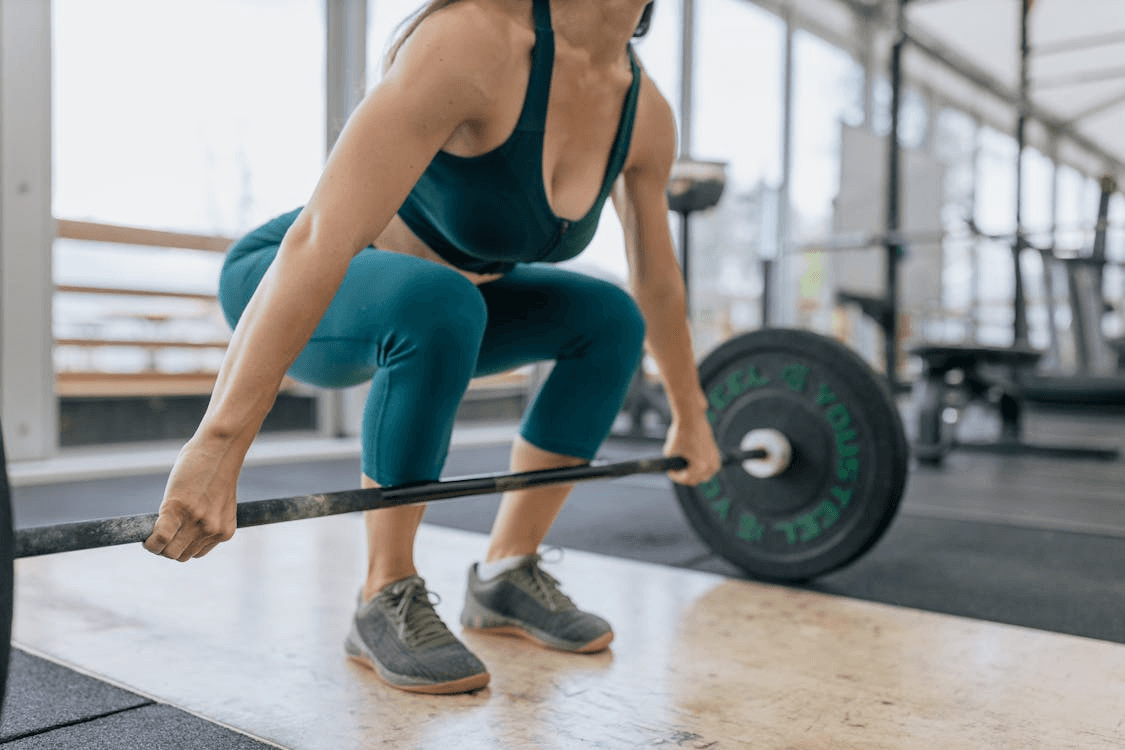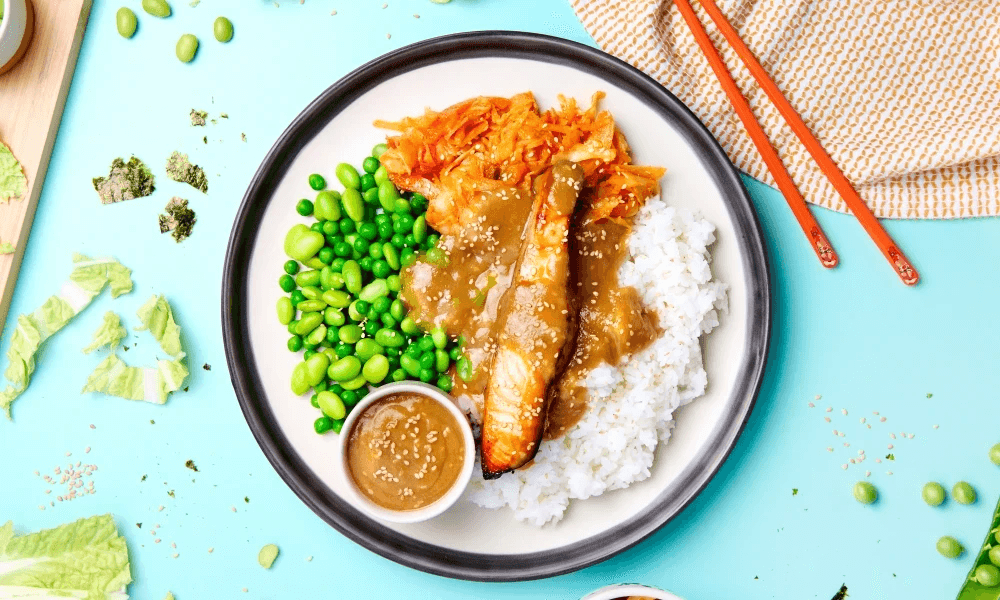If you've been going to the gym for a while, you've likely heard the terms "bulking" and "cutting" being mentioned. But what does bulking mean, and how does it fit into the broader context of fitness goals? In this blog post, we'll dive into the fundamentals of bulking, explore how it works, and provide some practical tips for optimising your bulk to help you achieve your muscle-building goals.
What does bulking mean?
Bulking is a structured method in a bodybuilding training cycle where the primary goal is to gain muscle mass and increase overall body weight. This process involves eating more calories than your body burns - commonly known as a caloric surplus - while engaging in resistance training to stimulate muscle growth. The goal is to ensure that your body has the building blocks to build muscle after workouts by eating high-protein, nutrient-dense foods, and to balance caloric intake with the right exercise to minimise fat gain and maximise muscle.

Bulking, cutting and maintaining
Bulking, cutting, and maintenance are three key phases in muscle building.
- Bulking is when you eat more calories than you burn to gain weight, focusing on building muscle. During this phase, you’ll lift heavy weights and consume plenty of protein to help your muscles grow.
- Bulking is typically followed by a Cutting phase, where you focus on reducing the body fat accumulated during the bulk while maintaining as much muscle as possible. Cutting involves a caloric deficit, where you consume fewer calories than your body needs, causing it to tap into fat stores for energy.
- Finally, Maintenance is when you eat just enough calories to keep your weight stable. This phase helps you maintain muscle mass while avoiding fat gain.
Each phase is important to help you reach your fitness goals: bulking builds muscle, cutting reveals it, and maintaining keeps your progress intact.
What is the best bulking diet?
There are generally two approaches to bulking: clean bulking and dirty bulking.
- Clean bulking involves carefully selecting nutrient-dense, whole foods to achieve your caloric surplus. The goal is to prioritise lean proteins, complex carbohydrates, and healthy fats to fuel muscle growth while minimising fat gain. Foods like chicken breast, brown rice, sweet potatoes, and vegetables are staples of a clean bulking diet.
- Dirty bulking takes a more relaxed approach, allowing for the consumption of highly processed, calorie-dense foods like pizza, burgers, and sugary snacks. While this can lead to faster weight gain, a higher percentage of that weight is often stored as fat, making the cutting phase more challenging.
Each method has its benefits and drawbacks. Dirty bulking gives faster results and is not as restrictive, though this means it can be more difficult to wean yourself off this diet when cutting. Dirty bulking may also lead to excess fat gain, a lack of energy, blood sugar problems and other health issues associated with a diet lower in nutrients and fibre.
A clean bulk diet is more restricted and difficult to follow, and yields slower results. However, you're less likely to put on fat, have better digestive health due to the fibre content, and it's generally the preferred option to maintain long-term health.

The best foods to eat on a bulking diet
To bulk successfully, focus on nutrient-dense foods that support your macronutrient needs:
- Proteins: Chicken, beef, fish, eggs, tofu, dairy products, and legumes are excellent protein sources for muscle repair and growth.
- Carbohydrates: Foods like rice, oats, and potatoes are rich in carbohydrates to provide the energy you need for intense workouts. Opt for brown rice, and leave the skins on potatoes to increase your fibre content.
- Fats: Healthy fats from nuts, seeds, oily fish, and avocados support joint, brain, and heart health, hormone production and overall well-being.
- Fruit and vegetables: Fruit and vegetables like squash, peppers, carrots, tomatoes, broccoli, spinach, lettuce, kale, oranges, bananas, apples, kiwi and berries taste great, add colour and flavour to your diet, and are packed with vitamins, antioxidants, and healthy fibre. Aim for a minimum of two pieces of fruit and three vegetable portions each day, but there's no upper limit. Try to 'eat a rainbow' of different coloured fruit and vegetables in order to consume an array of different antioxidants and nutrients.
How to calculate your bulking calorie intake?
A bulking diet should focus on creating a moderate caloric surplus while ensuring you're consuming sufficient amounts of macronutrients - protein, carbohydrates, and fats. Here's a rough guideline to follow:
- 250 calories/day surplus: For a lean bulk (minimises fat gain)
- 500 calories/day surplus: For a faster bulk (may lead to more fat gain but quicker muscle growth)
Macronutrient ratios:
- Protein: Aim for 1.6-2.2 grams of protein per kilogram of body weight. This macronutrient is crucial for muscle repair and growth. Excellent sources include lean meats, fish, eggs, legumes, and high-quality plant-based proteins like tofu and quinoa (1,2).
- Carbohydrates: Carbs are your body's primary energy source and should make up about 40-60% of your daily caloric intake. This roughly translates to around 5-7 grams of carbohydrates per kilogram of body weight (3). Opt for complex carbohydrates such as oats, brown rice, quinoa, and whole grains, which provide a sustained energy release throughout the day.
- Fats: Healthy fats play a key role in hormone production (including testosterone, which is critical for muscle growth), heart, brain, and joint health. Standard guidelines suggest that fats should make up about 30% of your daily calorie intake (with a maximum of around 12% of this coming from saturated fats)(4). Sources of healthy fats include avocados, olive oil, nuts, seeds, and fatty fish like salmon.
Incorporating nutrient-dense foods ensures that you're not just hitting your calorie goals but also supporting optimal performance and recovery in the gym. Find out more about how much protein you need to build muscle.

Is bulking safe?
Bulking is safe as long as it's done carefully.
One of the risks of bulking is gaining too much fat if you aren't careful with your food choices or overeat. To prevent this, stick to nutrient-dense foods whilst monitoring your progress and calorie intake. When transitioning from bulking to cutting, some people may struggle with the drop in calories as their appetite may have increased. Ensuring a balanced diet throughout these phases can help minimise risks.
How do you know if you're gaining muscle?
Minimising fat gain while bulking is important, but without regular check-ins to measure your body fat measurements it can be difficult to know if you are on the right track. Luckily, there are a few key indicators to help you track progress:
- Test your strength: Are you getting stronger in the gym? If you're consistently increasing the weight you lift or the number of reps you can do, it’s a strong sign that you're gaining muscle.
- Monitor your weight: Check the scale to ensure your weight is gradually increasing over time. A steady increase, rather than sudden spikes, is usually a good indicator of lean muscle gain. Aim for a 0.25-0.5% increase in body weight per week. (5)
- Check the mirror! Regularly assess your physique in the mirror. If you’re seeing muscle definition improve and not too much body fat accumulating, you’re likely bulking efficiently.
- Measure your success: Regularly measuring key body parts like arms, legs, and chest can show increases in muscle size. Visual changes, such as more muscle definition or a fuller appearance in specific areas, can also indicate growth.
- How you feel during workouts: Improved stamina, less muscle soreness, and quicker recovery times can all be signs that your body is adapting to training, potentially indicating muscle growth.
Regular tracking and a combination of all these methods will give you a clearer picture of your muscle gains.

When should you stop bulking?
Knowing when to stop bulking is just as important as understanding how to start. Typically, a bulking phase lasts anywhere from 8 to 16 weeks, depending on your individual goals, starting point, and how your body responds to the caloric surplus. However, the end of your bulk is not determined solely by time; it's about reaching a balance between gaining sufficient muscle mass and minimising excess fat gain.
You should consider stopping your bulk when your body fat percentage reaches a point where you feel uncomfortable or when it starts to impact your performance. For most people, bulking up to about 15-20% body fat is ideal, as going beyond this range can lead to diminishing returns in muscle gain. Higher body fat levels can also make the subsequent cutting phase more difficult and lengthy, as you'll have more fat to shed to reveal your hard-earned muscle. Monitoring your body composition and making adjustments as needed can help you end the bulk at the right time.
Some individuals may choose to stop bulking when they hit a plateau in strength gains, notice that further weight gain is resulting in more fat than muscle, or if they start feeling demotivated and find it harder to stay excited about training and continue gaining weight. If your training and diet are dialled in after a significant amount of time in a caloric surplus, but you're no longer seeing significant improvements, it may be time to transition to a cutting phase to lean out and maintain muscle definition.
Best exercises for bulking
Bulking isn't just about diet. It requires a carefully planned resistance training program to maximise muscle growth.
- Focus on compound exercises like squats, deadlifts, bench presses, and rows, as these movements engage multiple muscle groups and promote the greatest muscle hypertrophy.
- Additionally, aim for progressive overload. Gradually increase the weight, sets, or reps over time to consistently challenge your muscles. This will stimulate continued growth during the bulking phase.

The best bulking meal prep
Building muscle requires the right balance of calories, protein, and nutrients, and following a structured bulking plan will help you achieve your goals. The Prep Kitchen muscle gain meal plan provides the perfect solution for bulking, offering nutritious and tasty high-protein meals designed to support muscle growth!
Summary
To sum up, bulking is essential for bodybuilding and strength training, helping to build muscle mass and strength.
- A strategic bulking diet combined with intense resistance training can lead to significant muscle gains.
- Bulking should be followed by a cutting phase to reveal a more defined physique.
- Success in bulking and cutting depends on careful planning and consistency.
- Both bulking and cutting work together to help athletes and fitness enthusiasts create the shape they want, but the key to success lies in planning and consistency.
Good luck with your bulk!
If you enjoyed this article, check out these other related articles on the blog:
Should you eat protein before or after a workout?
Chris Tang's top tips to smash your personal goals
References:
- Morton, R. W., Murphy, K. T., McKellar, S. R., Schoenfeld, B. J., Henselmans, M., Helms, E., ... & Phillips, S. M. (2018). A systematic review, meta-analysis, and meta-regression of the effect of protein supplementation on resistance training–induced gains in muscle mass and strength in healthy adults. British Journal of Sports Medicine, 52(6), 376-384.
- Schoenfeld, B. J., & Aragon, A. A. (2018). How much protein can the body use in a single meal for muscle-building? Implications for daily protein distribution. Journal of the International Society of Sports Nutrition, 15, 10. https://doi.org/10.1186/s12970-018-0215-1
- Ahmed S, Shah P, Ahmed O. Biochemistry, Lipids. [Updated 2023 May 1]. In: StatPearls [Internet]. Treasure Island (FL): StatPearls Publishing; 2024 Jan-. Available from: https://www.ncbi.nlm.nih.gov/books/NBK525952/
- Gibson Moore, H. (n.d.). Fat - Nutritional information: British Nutrition Foundation. British Nutrition Foundation. https://www.nutrition.org.uk/nutritional-information/fat/
- Iraki, J., Fitschen, P., Espinar, S., & Helms, E. (2019). Nutrition Recommendations for Bodybuilders in the Off-Season: A Narrative Review. Sports (Basel, Switzerland), 7(7), 154. https://doi.org/10.3390/sports7070154




